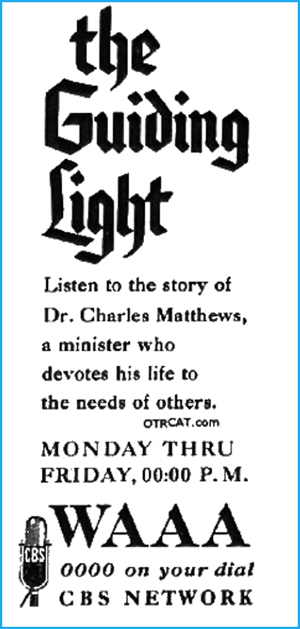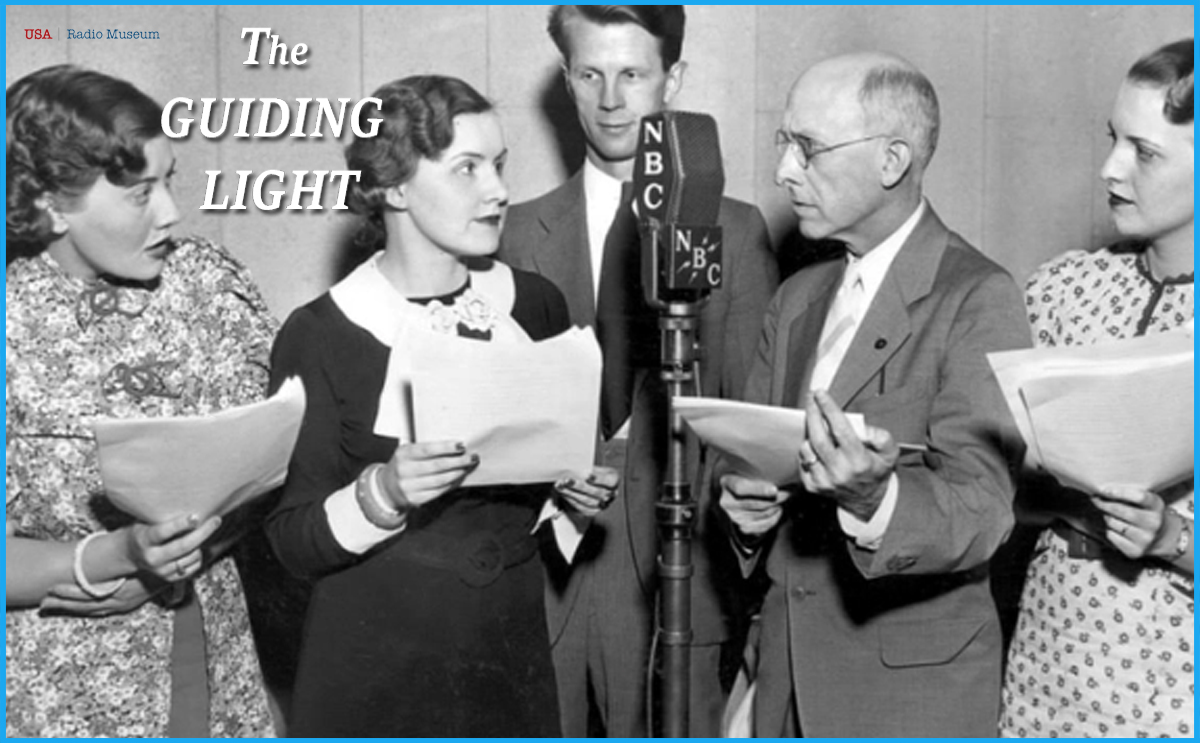Illuminating History: The Enduring Legacy of The Guiding Light A Beacon of Storytelling: The Birth of a Broadcast Legend Few radio serials h
Illuminating History: The Enduring Legacy of The Guiding Light
A Beacon of Storytelling: The Birth of a Broadcast Legend
Few radio serials have left as deep an imprint on American broadcasting as The Guiding Light. Its journey began on January 25, 1937, when NBC Radio introduced listeners to the heartfelt drama conceived by Irna Phillips, one of the founding voices of soap opera storytelling.
At its core, The Guiding Light was inspired by themes of faith, redemption, and personal struggles, with Reverend John Ruthledge serving as the moral center of its earliest episodes. His study lamp—the “guiding light”—symbolized hope, illuminating the path for those seeking solace. But as the years passed, the story evolved beyond its religious roots, embracing multi-generational family drama, romance, betrayal, and intrigue—hallmarks of the modern soap opera.
When The Guiding Light first aired on NBC Radio in 1937, it featured a talented cast that brought its heartfelt storytelling to life. Some of the early radio cast members included:
- Arthur Peterson Jr. – Played Dr. John Ruthledge, the compassionate minister whose study lamp symbolized the show’s guiding light.
- Ruth Bailey – Portrayed Rose Kransky, a key character in the early years.
- Gladys Heene – Played Torchy Reynolds, adding depth to the drama.
- Mignon Schreiber – Took on the role of Mrs. Kransky, part of the Kransky family.
- Muriel Bremner – Played Fredericka Lang, another early character.
- Betty Arnold – Portrayed Iris Marsh, contributing to the show’s emotional storytelling.
- Bill Bouchey – Played Charles Cunningham, a notable presence in the series.
- Paul Barnes – Took on the role of Jack Felzer.
- Phil Dakin – Played Ellis Smith.
- Seymour Young – Portrayed Jacob Kransky, another member of the Kransky family.
These actors helped establish The Guiding Light as a radio drama powerhouse, setting the stage for its eventual transition to television.
 Radio’s Golden Era (1937–1956) & Sponsor Influence
Radio’s Golden Era (1937–1956) & Sponsor Influence
The Guiding Light’s 19-year radio run (1937–1956) was a defining era in soap opera history, shaping serialized storytelling and captivating audiences across the country. Here’s a deeper look at its radio legacy:
The Early Years (1937–1947): A Story of Faith & Family
- Premiered on January 25, 1937, on NBC Radio, created by Irna Phillips.
- Initially centered on Reverend John Ruthledge, a compassionate minister in the fictional town of Five Points.
- The show’s title, The Guiding Light, referred to the lamp in Ruthledge’s study, symbolizing hope and guidance for those in need.
- Storylines focused on personal struggles, redemption, and moral dilemmas, resonating deeply with Depression-era audiences.
1937–1942: Procter & Gamble Sponsorship
When The Guiding Light debuted, Procter & Gamble backed the show, promoting its household products—most notably White Naphtha Soap. This relationship would later define soap opera history, forever linking soaps with their corporate sponsors.
1942–1947: The General Mills Era
A significant shift occurred in 1942, when sponsorship transferred to General Mills, making The Guiding Light part of The General Mills Hour. Products like Bisquick and Wheaties became prominent in advertisements, reinforcing the show’s family-oriented appeal.
1947–1956: Return to Procter & Gamble & DUZ Sponsorship
When CBS acquired the program in 1947, Procter & Gamble resumed sponsorship, further embedding its brand in soap opera culture. By the early 1950s, DUZ detergent became a primary sponsor, introducing an era of memorable taglines and advertising integration.
In the 1950s, one of the most notable moments of this sponsorship was Clayton Collier’s signature sign-off, which aired at the end of each broadcast:
“This is Clayton Collier wishing you good day, and good DUZZING!”
These sponsorships weren’t just financial support—they actively shaped the style of storytelling and audience engagement, proving the seamless relationship between advertising and entertainment during the golden age of radio.
The Guiding Light | ‘Rose and Charles Have Dinner’ | July 15, 1940
Audio Digitally Remastered by USA Radio Museum | A USARM Special Acknowledgement: This featured audio is courtesy of Ted Smucker, of Cassopolis, MI.
Transition to Television (1952–2009): A New Era of Drama
The Guiding Light made its television debut on June 30, 1952, transitioning from radio to CBS TV while continuing its radio run until 1956. Over the years, it became one of the most iconic soap operas, known for its multi-generational storytelling, dramatic twists, and groundbreaking narratives.
Despite its legacy, the show faced declining viewership in the 2000s, as audience preferences shifted and daytime soaps struggled to maintain their once-dominant presence. On April 1, 2009, CBS announced that Guiding Light would end after 57 years on television, citing low ratings and changing media consumption habits. The final episode aired on September 18, 2009, marking the end of its 72-year run across radio and television.
Its cancellation signaled a broader decline in traditional soap operas, with other long-running shows like As the World Turns and One Life to Live following suit. However, its influence remains strong, shaping the genre and leaving behind a devoted fanbase.
- 1952: Broadcast in 15-minute episodes, mirroring its radio format.
- 1968: Expanded to 30 minutes, adapting to evolving TV viewing habits.
- 1977: Transitioned to 60-minute episodes, allowing for deeper, more complex storytelling.
The show’s filming locations also evolved:
Chicago (1937–1947)
Los Angeles (1947–1949)
New York City (1949–2009)
In 2007, aiming for a cinematic, real-world feel, the show shifted production to Peapack, New Jersey—a bold attempt to modernize its format.
However, as daytime television viewership declined, CBS announced the cancellation of The Guiding Light on April 1, 2009, with its final episode airing on September 18, 2009. After 72 years, the longest-running soap opera in American history came to an emotional close.
Unforgettable Storylines & Characters
Throughout its radio and TV run, The Guiding Light introduced some of the most iconic storylines in soap opera history:
Roger Thorpe’s Villainous Legacy – A tale of deception, power, and betrayal.
Reva Shayne’s Fountain Leap – A moment that solidified her legendary status.
Phillip Spaulding’s Paternity Revelation – A deep exploration of identity struggles.
Maureen Bauer’s Tragic Death (1993) – An emotional shockwave felt across soap opera fandom.
Annie Dutton’s Manipulative Reign – Schemes of deception that kept audiences on edge.
Each of these stories wasn’t just entertainment—they reflected the changing social landscape, addressing themes of power, redemption, identity, and resilience.
The Enduring Legacy of The Guiding Light
For over 72 years, The Guiding Light stood as a pillar of American broadcasting, evolving from a humble radio serial in 1937 to a television institution that captivated generations. It wasn’t just a soap opera—it was a cultural phenomenon, shaping the landscape of serialized storytelling and leaving an indelible mark on the industry. Beyond its storytelling, The Guiding Light remains a cultural touchstone, bridging the gap between generations. Families passed down their love for the series, making it a shared experience across decades.
A Trailblazer in Radio and Television
Created by Irna Phillips, The Guiding Light pioneered the soap opera format, introducing deeply character-driven narratives that resonated with audiences. Its transition from NBC Radio to CBS Radio and later CBS Television showcased its adaptability, proving that compelling storytelling could transcend mediums.
Breaking Boundaries in Storytelling
Throughout its run, The Guiding Light tackled groundbreaking themes—from family struggles and romance to social issues like cancer awareness and racial integration. It was among the first soaps to introduce African American characters in professional roles, reflecting the changing social landscape of America.
A Legacy of Innovation
The show’s cinematic shift in 2007, filming on-location in Peapack, New Jersey, was an ambitious attempt to modernize the soap opera format. Though it ultimately ended in 2009, its influence remains strong, shaping the storytelling techniques of modern dramas.
A Cultural Touchstone
Few shows can claim the multi-generational impact of The Guiding Light. Families passed down their love for the series, making it a shared experience across decades. Its cancellation marked the end of an era, but its legacy lives on—through archived episodes, devoted fans, and historians like USARM, who preserve its rich history.
As we reflect on its unparalleled journey, The Guiding Light remains a beacon of storytelling excellence, proving that great narratives never truly fade—they continue to inspire, illuminate, and guide us forward.
Thanks to devoted collectors and broadcast historians, archived recordings—including classic commercials and sponsor materials—continue to be preserved. These advertising moments provide a unique window into mid-20th-century consumer culture, showcasing how brands like DUZ, Procter & Gamble, and General Mills shaped entertainment and everyday life.
The Guiding Light | ‘Bill Developes a Drinking Problem’ | August 16, 1950
Audio Digitally Remastered by USA Radio Museum | A USARM Special Acknowledgement: This featured audio is courtesy of Ted Smucker, of Cassopolis, MI.
A Legacy That Still Guides Us
The final curtain may have fallen on The Guiding Light, but its influence remains everlasting. It wasn’t merely a soap opera—it was a beacon of storytelling excellence, illuminating the power of narrative, family, and emotion.
Its history proves that great stories never truly fade—they continue to inspire, illuminate, and guide us, shaping our journey through life’s human experiences and defining the way we live.


Jim I Hope that someday in someway “The Guiding Light” will be ignite once again, but on a Kids and Teens’ children’s network level.
Thank you, Vaughn, for your comments, your visits, and your support for this site. Always appreciated!
Same goes to you as well Jim.